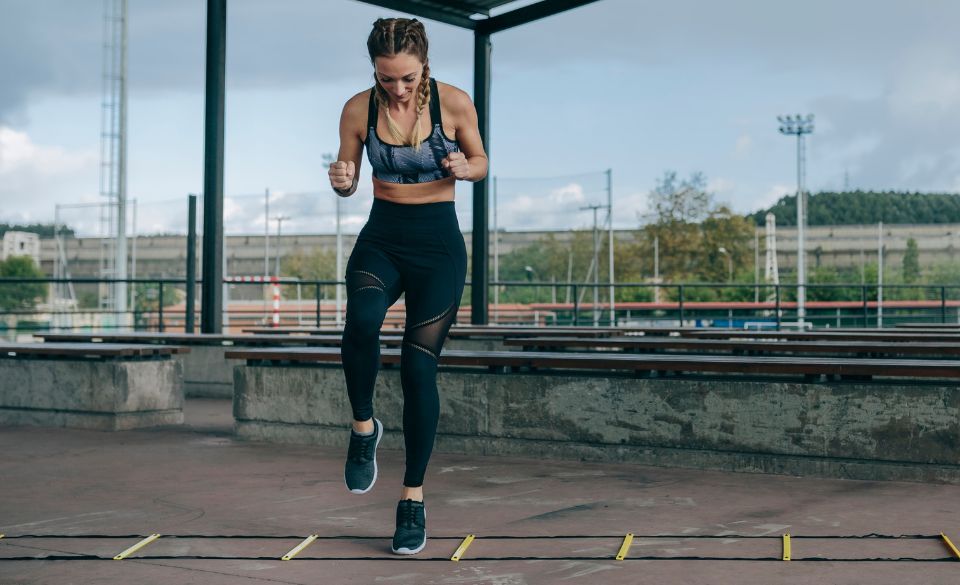
Exploring Reaction Time in Physical Fitness: What You Need to Know
Page Contents
When it comes to physical fitness, there are many factors that contribute to overall performance. One important aspect that is often overlooked is reaction time. Reaction time refers to the amount of time it takes for your body to respond to a stimulus. This can have a significant impact on athletic performance, especially in sports that require quick reflexes and coordination. In this article, we will explore what reaction time is in physical fitness and how it can be tested.
What is Reaction Time in Physical Fitness?
Reaction time in physical fitness refers to the time it takes for your body to respond to a stimulus. This can include visual, auditory, or tactile stimuli. In sports and other physical activities, a quick reaction time can be the difference between winning and losing. It plays a crucial role in sports that require quick reflexes, coordination, and agility. For example, in basketball, a quick reaction time can help players anticipate the movements of their opponents and react quickly to defend the ball. Similarly, in boxing, a quick reaction time can help fighters dodge punches and counter-attack with precision.
Reaction time is influenced by a number of factors, including age, gender, fitness level, and the type of stimulus. In general, younger individuals tend to have faster reaction times than older individuals. Additionally, men tend to have faster reaction times than women, although this difference tends to decrease with age.
To improve reaction time, athletes and fitness enthusiasts can incorporate exercises that focus on agility, quick footwork, and explosive movements. Plyometric exercises, such as box jumps and depth jumps, can also help improve reaction time by training the muscles to respond quickly and explosively. Furthermore, practicing reaction time tests and games can help improve reaction time.
Reaction time is an important aspect of physical fitness that can have a significant impact on athletic performance. By understanding what reaction time is and how it can be tested, athletes and fitness enthusiasts can better train their bodies to respond quickly and accurately. Incorporating exercises that improve reaction time into your fitness routine can help take your performance to the next level.
How Do You Test Reaction Time?
There are many ways to test reaction time, both in the lab and in the gym. One common method is the simple reaction time test, which involves pressing a button as quickly as possible when a light turns on. This test measures the time it takes for the participant to respond to a single stimulus.
Another method is the choice reaction time test, which requires the participant to respond to different stimuli with different responses. For example, they may be asked to press a green button when a green light appears and a red button when a red light appears. This test measures the time it takes for the participant to make a decision and respond accordingly.
In addition to these tests, there are also computer-based reaction time tests that are commonly used in research settings. These tests involve the participant responding to stimuli on a computer screen, such as pressing a key when a target appears.
It’s important to note that reaction time can be influenced by many factors, such as age, gender, and fatigue. Therefore, it’s important to take these factors into account when interpreting reaction time test results.
Most Common Reaction Time Tests in the Gym
In addition to the exercises mentioned above, there are several other reaction time tests that can be performed in the gym to help improve athletic performance.
One popular test is the Stroop test, which involves reading the names of colors that are written in a different color than the word itself. For example, the word “green” might be written in red ink. The participant is asked to say the color of the ink as quickly as possible, which requires quick thinking and reaction time.
Another test is the reaction time ruler test, which involves holding a ruler vertically and dropping it between your fingers. The participant must catch the ruler as quickly as possible, and the distance the ruler falls can be measured to determine reaction time.
The partner catch game is another fun and effective reaction time exercise. Participants stand across from each other and throw a ball back and forth. The goal is to catch the ball as quickly as possible, which requires quick reflexes and coordination.
It’s important to note that while reaction time is an important aspect of athletic performance, it is not the only factor that contributes to success. Endurance, strength, and technique also play important roles, and it’s important to have a well-rounded fitness routine that incorporates a variety of exercises.
Exercises To Improve Reaction Times
Improving reaction time is essential for any athlete, as it can help them perform better in sports that require quick reflexes and coordination. The good news is that there are several exercises that can be done to improve reaction time. Here are some of the most effective exercises for improving reaction time:
Agility Ladder
The agility ladder is a popular exercise that can help improve reaction time. It involves a series of footwork drills that are designed to improve coordination and speed. The agility ladder can be used for a variety of exercises, including lateral shuffles, high knees, and quick feet. By practicing these drills regularly, athletes can improve their reaction time and overall agility.
Reaction Ball
The reaction ball is another effective exercise for improving reaction time. It is a small, unpredictable ball that bounces in different directions, forcing the participant to react quickly. By catching the ball, athletes can improve their hand-eye coordination and reaction time.
Plyometric Exercises
Plyometric exercises are explosive movements that involve jumping and other high-impact exercises. They are designed to improve power, speed, and agility, making them an excellent choice for athletes looking to improve their reaction time. Box jumps and depth jumps are two of the most effective plyometric exercises for improving reaction time.
Sled Drags
Sled drags are an excellent exercise for improving reaction time and overall strength. They involve pulling a sled across the ground, which requires the athlete to use explosive power and quick reflexes. By practicing sled drags regularly, athletes can improve their reaction time, power, and overall athletic performance.
Balance Exercises
Balance exercises are an often-overlooked component of improving reaction time. By practicing balance exercises regularly, athletes can improve their proprioception and overall body control. This can lead to improved reaction time and better athletic performance.
Final Words
Studies have shown that improving reaction time can have a positive impact on athletic performance. In a study published in the Journal of Strength and Conditioning Research, researchers found that athletes with faster reaction times had better performance in sprinting and jumping exercises. Another study published in the Journal of Sports Sciences found that improving reaction time can lead to better performance in basketball, especially in defensive maneuvers.
Not only is reaction time important for sports performance, but it can also have real-world applications. A study published in the Journal of Aging and Physical Activity found that reaction time is a predictor of falls in older adults. By improving reaction time through exercise and training, older adults can reduce their risk of falls and injuries.
It’s important to note that reaction time can vary depending on a variety of factors, including age, sex, and fitness level. However, with consistent training and practice, it is possible to improve reaction time. Incorporating reaction time exercises into your fitness routine can help improve your overall athletic performance and reduce your risk of injury.
In conclusion, reaction time is a crucial aspect of physical fitness that can impact athletic performance and overall health. By understanding what reaction time is, how it can be tested, and incorporating exercises that improve reaction time into your fitness routine, you can train your body to respond quickly and accurately to stimuli. Don’t overlook the importance of reaction time in your fitness journey, as it can be the key to unlocking your full potential.


